Zagórz 2023-05-11
Zagorz railway station.
Geographic coordinates 49.512N 22.263E.
City of Zagorz.
The city of Zagórz is located in the Podkarpackie Voivodship in the Sanok District, in the Zagórz Commune. City rights were granted in 1977. The area of the city is 22.39 km2. in 2020, the city had a population of 5,251. Zagórz is located near the mouth of the Osława River to the San, in the Bukowskie Foothills, in the Sanok Land. Historically, it is Lesser Poland, and culturally, it is the Bieszczady Mountains.
The town was founded in 1412 and was a private settlement of Mikołaj of Tarnawa. Until the 17th century, the town was owned by the Tarnawski family. Then the settlement was ruled by other magnate families. Already in the fourteenth century, there was a Roman Catholic parish here. In 1710, a Monastery - Fortress of the Discalced Carmelites was built in Zagórze, the ruins of which now dominate the area. In 1713, a hospital for war invalids was built next to the monastery.
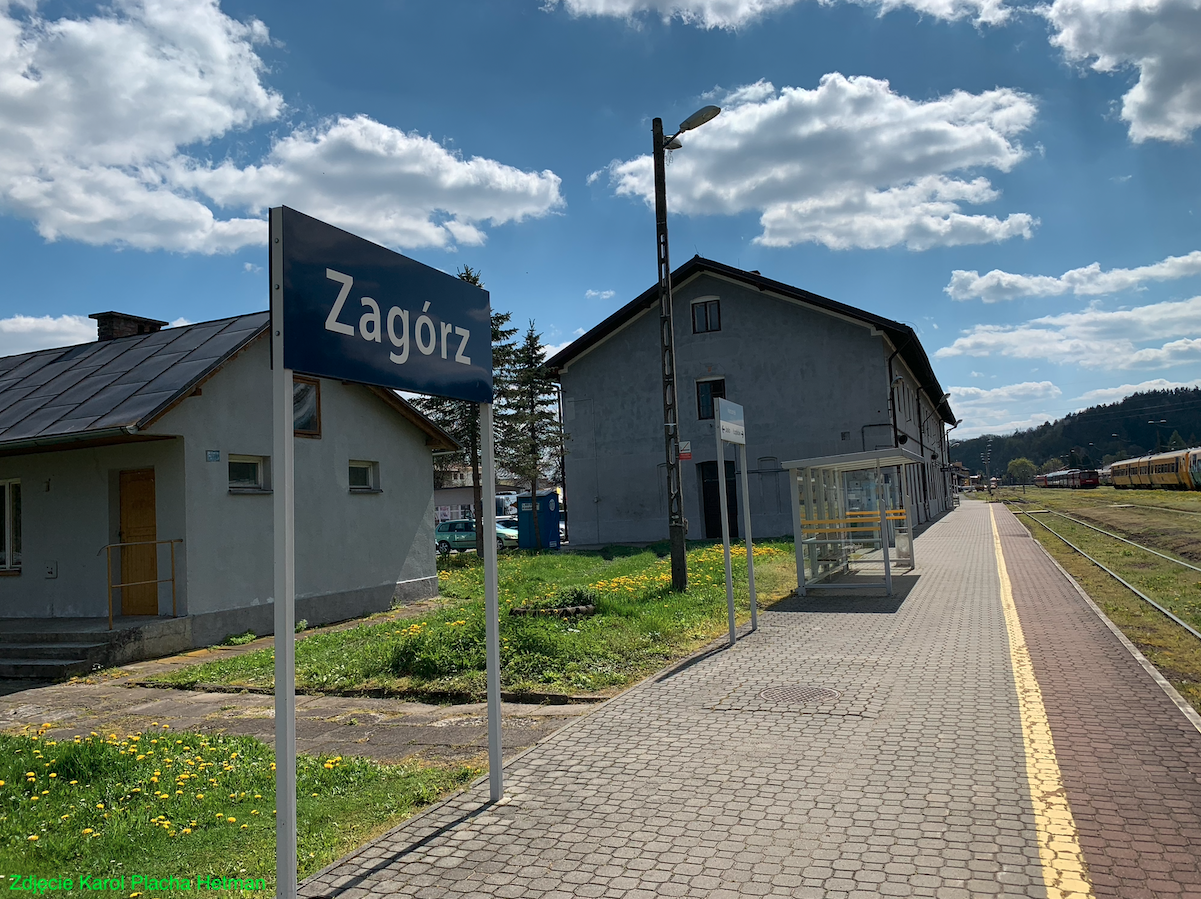
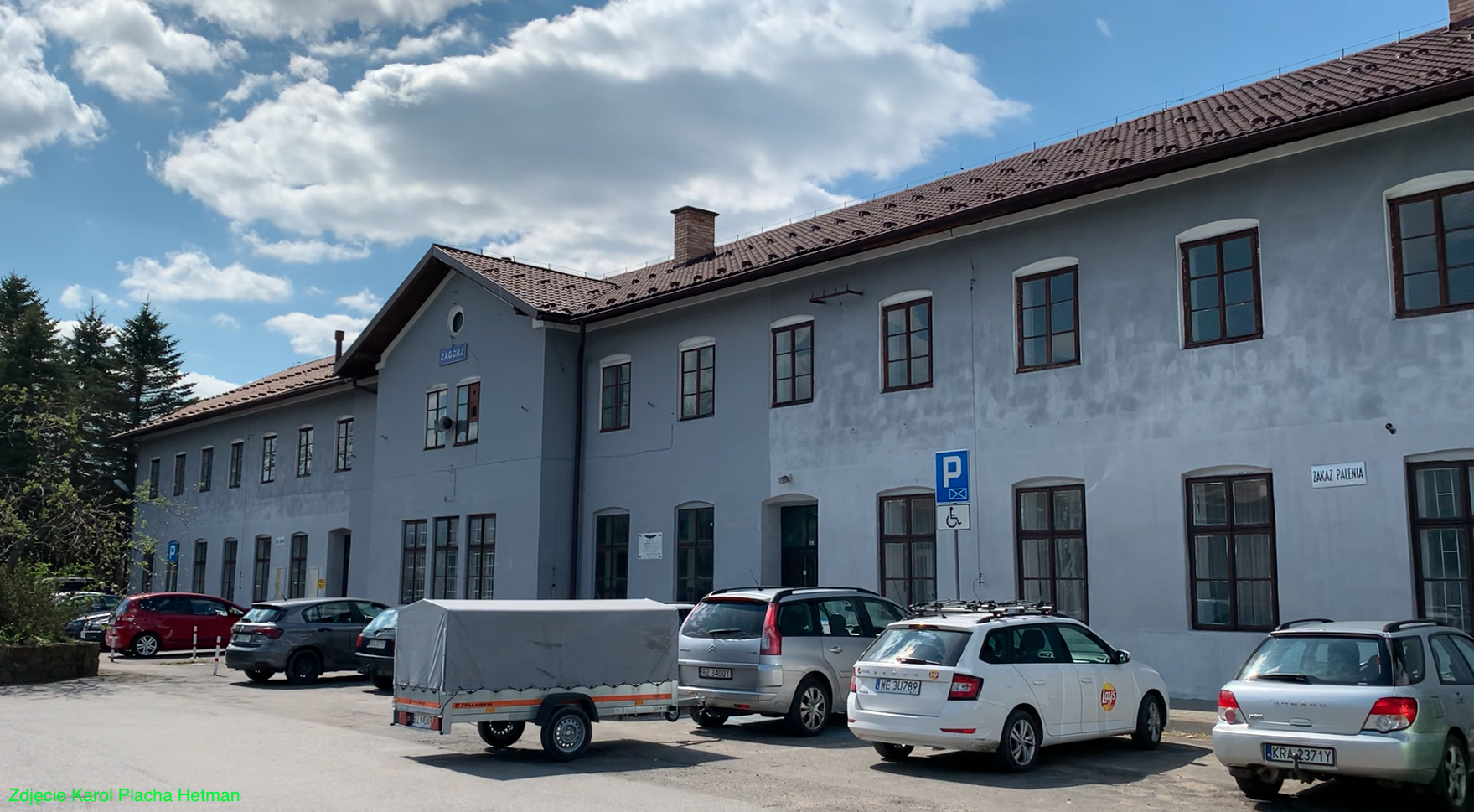
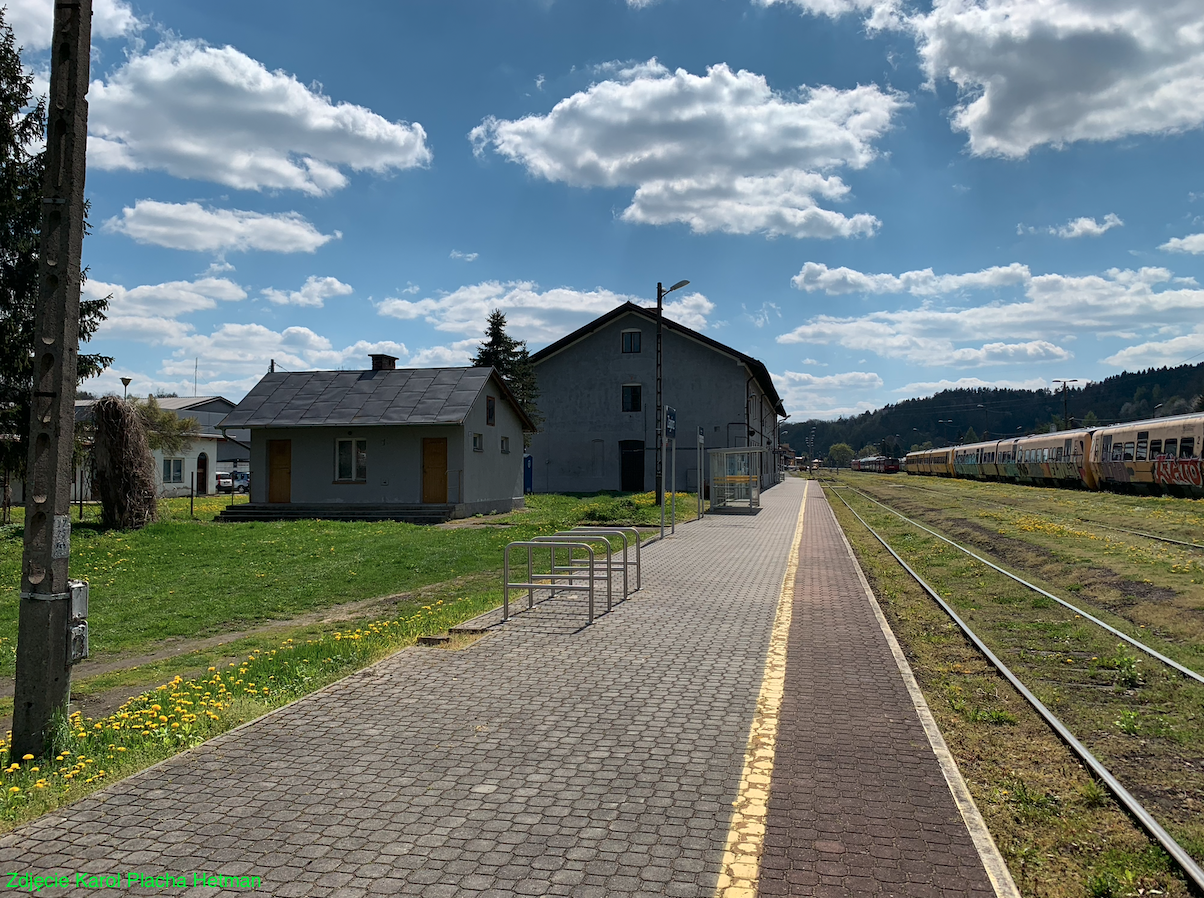
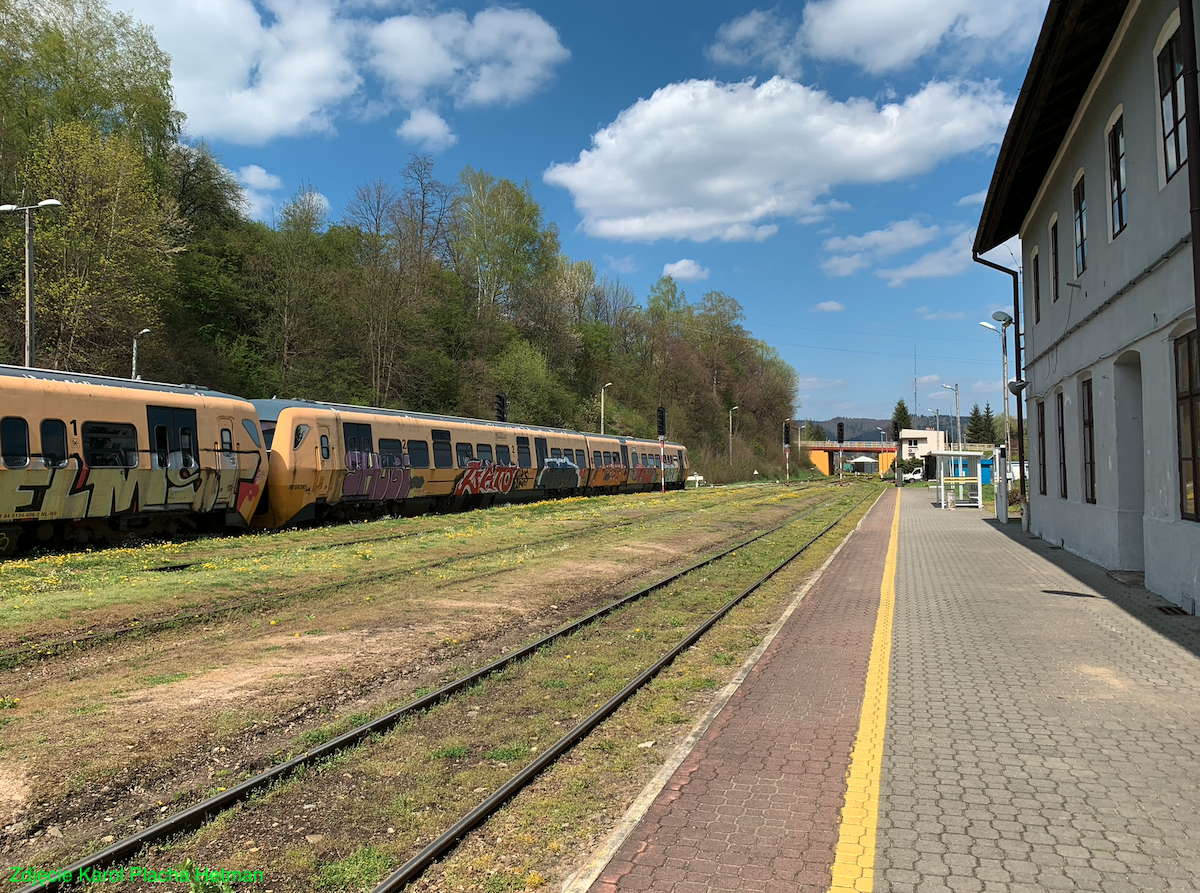
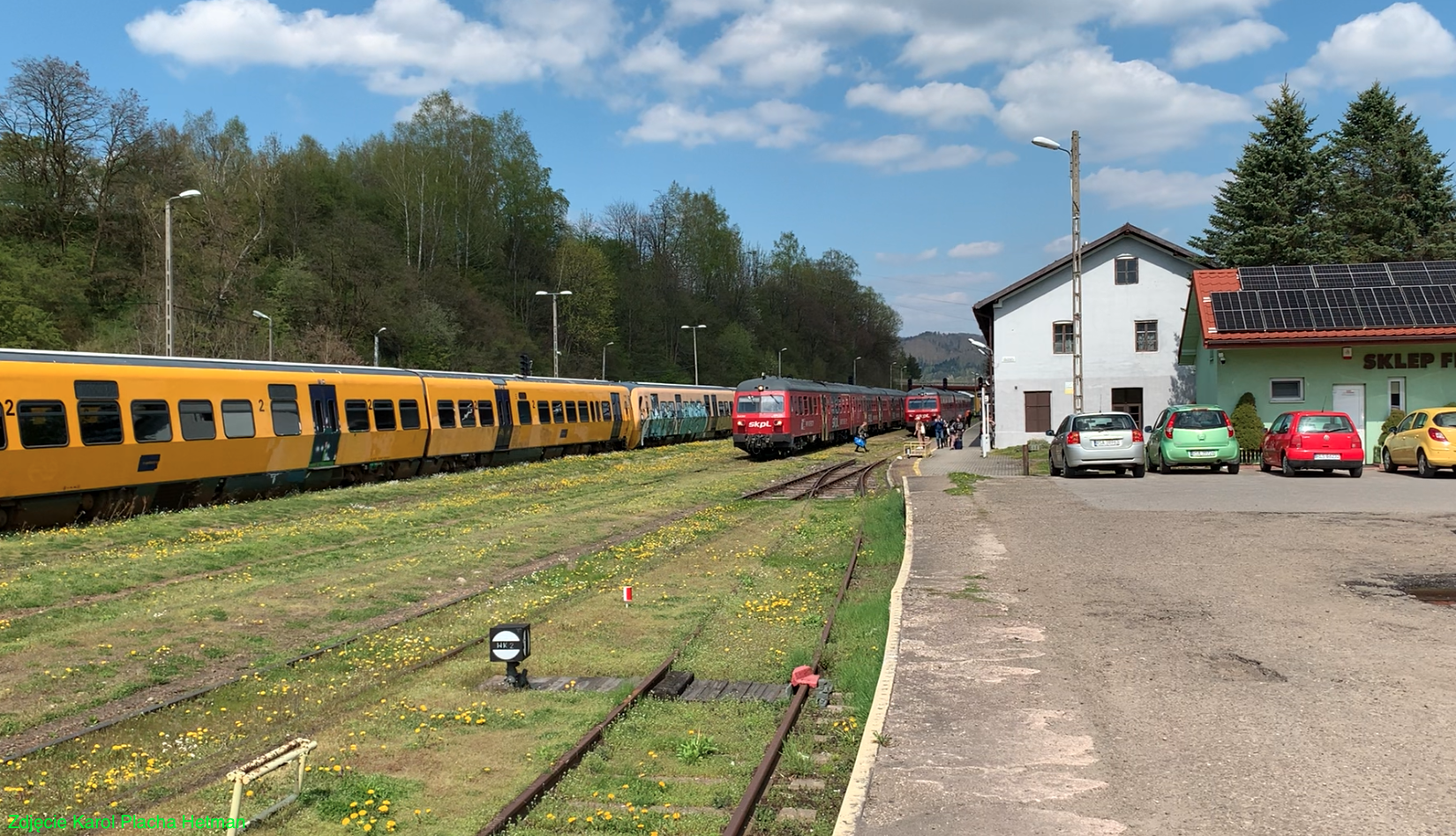
The development of the railway contributed to the further development of the settlement and the surrounding area. In 1872, the railway line of the First Hungarian-Galician Iron Railway was opened. This line connected Zagórz with the Kraków - Lwów line running through Przemyśl by the Karol Ludwik Railway. In 1874, a tunnel was opened in Łupków, which connected Przemyśl - Zagórz - Budapest. In 1884, sections of the Galician Transversal Railway were supplemented with the Stróże - Nowy Zagórz section. At that moment, Zagórz became a large railway junction. About 3,000 people worked on the railway. A housing estate was built for railwaymen's families.
During the Polish-Ukrainian fights in 1918, a Committee of Defenders of the Zagórze Junction was organized in Zagórze, consisting of railway workers and members of the "Sokół" organization. For the purposes of the fight, the railway workers assembled two armored trains, "Gromoboj" and "Kozak". Trains have contributed to the smooth running of railway traffic. The decoration - the Cross of the Defenders of the Zagórski Junction was established as a result of the fights between Poland and the Ukrainians, taking place from November 1918. The Polish population and Polish railway workers stood up for Zagórze and the railway junction, which the Ukrainians wanted to destroy. The crosses as decorations were made of bronze alloy in the locomotive depot in Zagórze.
Again, in September 1939, Polish railwaymen contributed to the efficient evacuation of civilians, and then Polish soldiers, to the south. Many railwaymen were members of the Home Army and conducted reversal actions against the Germans. On September 13, 1944, Zagórz was occupied by the Soviets.
In 2000, the Millennium Cross was placed on a hill in Zagórze. The cross is 16 m high and the arms span 3.20 m. On November 11, 2000, the cross was consecrated by the Metropolitan Archbishop of Przemyśl, Father Józef Michalik. In the past, on the hill since 1933, there was a cross erected on the anniversary of Poland regaining independence in 1918, which was destroyed during the Second World War.
For such a small town, Zagórz has two railway stations; New Zagórz and Zagórz.
Nowy Zagorz station.
At the Nowy Zagórz station there is a beautiful palace-style station. The original station was opened in 1884. It was a two-story building with a sloping roof covered with tiles. During the Great World War, the building was destroyed by the Muscovites. In the period 1921 - 1924, the station was rebuilt in a much larger form, in the palace style. The station has three floors. It is covered with brown tiles. From the side of the platforms there is a platform roof. From the side of the station square, there is a representative entrance to the station hall, over which there is a balcony. On the sides of the entrance, towers were built protruding from the front of the building. The whole building is symmetrical, with numerous cornices and decorations. The building is awaiting renovation of the façade and roof. In the building she was; waiting room, ticket and luggage counters, restaurant and the Polish Post Office. There were also flats and rooms for railway services. The station is located at Dworcowa Street, and the square in front of the station is called Plac Chopina.
There are currently six used tracks at the station. Previously there were 12 tracks. There are traffic lights at the station. Low-type platforms are earthen. The Nowy Zagórz station serves up to 10 passengers per day (2018).
Zagorz station.
The station was the first station in Zagórze. For some time the station was called Sanok Zagórz (1973 - 1976). The Zagórz station is located directly on the line towards the tunnel in Łupków. There is a station building at the station, which is currently inaccessible to travellers. The building is a two-story, simple shape.
There are 2 platforms and 2 platform edges at the Zagórz station. The station has 6 main tracks, 2 of which are located at low, earthen platforms. Currently (2023) the ticket office at the station is closed. The station building is inaccessible to travelers. Toilets are outside in the form of Toi-Toi cabins. At the Zagórz station, there is a 24-hour station of the Railway Protection Guard. There were two locomotive depots at the station. One of them in 2010 was dismantled. It was a time when freemasonry was liquidating railway connections in Poland. Fortunately, most of the railway facilities have been occupied by the SKPL company, where the company's rolling stock is being renovated. Train traffic at the station is run by two signal boxes: "Zg" and "Zg1", which have mechanical devices, centralized with traffic lights. In 2017, the station served up to 20 passengers per day, and in 2022, up to 40 passengers per day.
The Zagórz and Nowy Zagórz stations serve two railway lines; No. 107 Nowy Zagórz - Łupków and line No. 108 Stróże Krosna - Sanok - Zagórz - Krościenko - Chyrów (currently in Ukraine). There is also a railway connection No. 617 Zagórz - Zagórz R101.
Railway line No. 617 is a single-track, non-electrified, connecting junction No. 46 with junction No. 101 at the Zagórz station. The line has a length of 1.179 km. Currently (2023) the speed of the train is 40 km/h. At the time of construction (November 12, 1872) it was a part of the railway route from Przemyśl to Budapest. Electromagnets for automatic train braking are installed on the line. It must be remembered that the track layout in this part of the station forms a triangle, which was used to turn the locomotives. Therefore, no locomotive turntable was built in Zagórze. All trail; Przemyśl - Chyrów - Zagórz - Komańcza - Budapest was put into operation on December 25, 1872. Individual sections of the route were put into operation on the following dates: Przemyśl - Chyrów 33.2 km - May 13, 1872. Chyrów - Krościenko 19.4 km - July 1, 1872. Krościenko - Ustrzyki Dolne 8.1 km - September 3, 1872. Ustrzyki Dolne - Zagórz - Komańcza 70.2 km - November 12, 1872. Komańcza - Łupków 13.7 km - December 18, 1872.
The railway route from Sanok was launched in 1884.
In 1892, the Railway Workshops in Stary Zagórze were liquidated and the employees (about 400 railway workers) were transferred to the Workshops in Nowy Sącz. Workshop facilities were taken over by Fabryka Wagonów i Maszyn in Sanok - Kazimierz Lipiński, now "Autosan".
From the 1950s, PKP trains from the center of Poland to Bieszczady ran through Chyrów. Railway line No. 102; Przemyśl – Malhowice, has a length of 12,380 km, is single-track, electrified. Further on, the line leads to the disused border crossing Hermanowice – Chyrów (in Ukraine). It was the trail Przemyśl - Chyrów - Krościenko - Ustrzyki Dolne - Zagórz. The border crossing was completely closed in 1994. The track still exists. During the period of People's Poland, the normal gauge track preserved on the Soviet side allowed for passage from Krościenko through Starzawa, Chyrów and Niżankowice to Malhowice. Long-distance trains to Bieszczady ran along this route. These trains were unavailable to CCCP residents. Soviet soldiers stood on the steps of the carriages and watched over passengers and Polish railway workers. In 1963, an intergovernmental agreement was concluded. It allowed to control passengers and railwaymen on trains in CCCP. There was no border check and no need to have passports, but an ID card was necessary. In 1994, the movement of passenger trains was stopped. No agreement was concluded with the government of Ukraine. In 2022, a renovation was carried out on the Polish side. On the section from Krościenko towards the border, tourist trolleys are operated. There were no plans to build a trail only in Poland, Krościenko - Malhowice, due to very difficult terrain and little benefit from such a connection.
Current railway connections are made from Zagórze via Sanok - Krosno - Jasło - Rzeszów - Kraków. In May 2023, Zagórz was served by TLK "Wetlina" 30110 and TLK "Bieszczady" 30112 trains. There are more connections during the holiday season.
Written by Karol Placha Hetman
